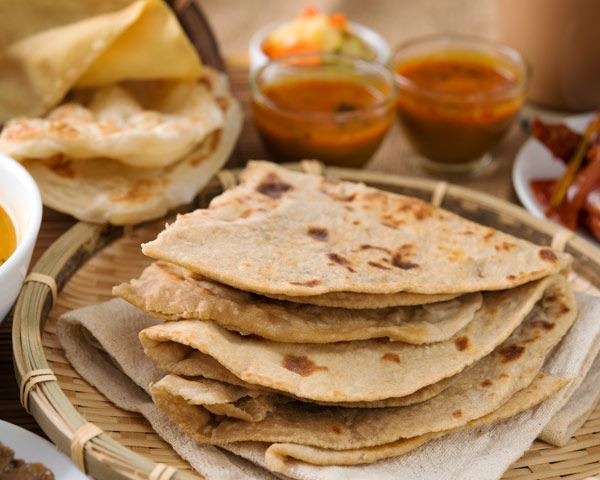Flatbread Around The World: Indian Roti
It may look similar to the hardworking tortilla, but this unleavened bread from India is typically made on a traditional griddle called a tava, and baked until it's very thin. Where poufy, doughy naan is rarely eaten on a daily basis in India, the slimmer roti is a daily staple and works at every meal, served with yogurt, honey, cooked vegetables or curries (or really, whatever you've got to eat with it).
The word roti is derived from the Sanskrit word "roṭikā" meaning "bread", and though it is a traditionally Indian dish it has migrated across the world and appears in many different forms (andunder different names) across the Americas, and Africa. It is also consumed in parts of South Africa, the southern Caribbean, particularly in Trinidad and Tobago, Guyana, and Suriname, and Fiji. Its defining characteristic is that it is unleavened. Indian naan bread, by contrast, is a yeast-leavened bread. A kulcha in Indian cuisine is a bread-like accompaniment, made of processed flour ("Maida") leavened with yeast.
In Sri Lanka, probably the most popular type of roti is pol roti (coconut roti), made of wheat flour, kurakkan flour or a mixture of both, and scraped coconut. Sometimes, chopped green chillies and onion are added to the mixture before cooking. These are usually thicker and harder than other roti types. They are usually eaten with curries, or some types of sambol or lunu miris and considered a main meal rather than a supplement.
Want to know more about how flatbread is made in other countries? Click here to see 11 Incredible Flatbreads From Around the World
